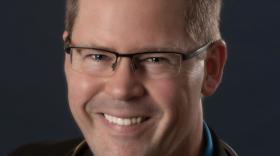Rural and urban Oklahomans have different mortality rates from COVID-19 -- and the gap is widening.
"The split between urban and rural experience of COVID-19 is getting wider, the disparity between them," said Dr. Jennifer Clark, faculty lead for OSU Center for Health Sciences' Project ECHO. "96 deaths per 100,000, relative to, kind of, 79 deaths per 100,000 in the urban section."
Dr. Randolph Hubach, associate professor of rural health at OSU Center for Health Sciences, described that as a "huge disparity."
"I think there's a couple things that start to come into play," Hubach said. "One of them is the current infrastructure for public health and medical in rural areas. We know that our hospitals and clinics are overburdened.
"Simultaneously, what we know from the research is that those within rural communities tend to present later to care, so if individuals have some comorbid conditions or things that could have been addressed earlier on, they might be presenting to care when that is no longer easy to rectify, which increases mortality rates, too," Hubach said.
Hubach said mistrust and misperception of health care and public health officials are also at play.
"Specifically when it comes to COVID, we're seeing a lot of misunderstanding and mistrust," Hubach said. "Individuals having a misunderstanding of how COVID is transmitted, the true impact of COVID within the community and how it impacts the body, and that's been playing out as we're seeing within communities with debates about masks and, now, as it comes to vaccine rollout."
Hubach said health officials should attempt to reach out to trusted messengers in rural communities to help spread the message that the virus is serious and not just an urban issue, as well as increase confidence in and willingness to take the vaccine.
"The Kaiser Family Foundation just released some data that shows 29% of rural residents do not plan to get vaccinated for COVID" compared to 15% of urban residents, Hubach said.
"So if 30% of our rural residents won't even get vaccinated for COVID, we're not going to achieve herd immunity," Hubach said, "which means we're going to start to see this trend still continue to grow that'll disproportionately impact these rural communities."
As of Wednesday, the OSU Center for Rural Health reported 358 COVID-19 deaths in rural Oklahoma in January, by far the most of any month of the pandemic so far.






